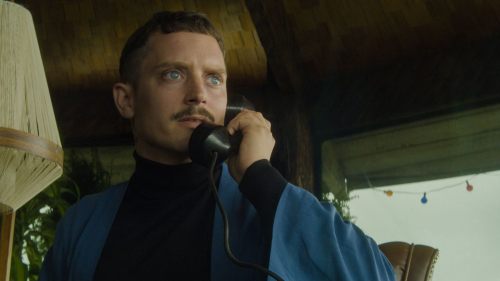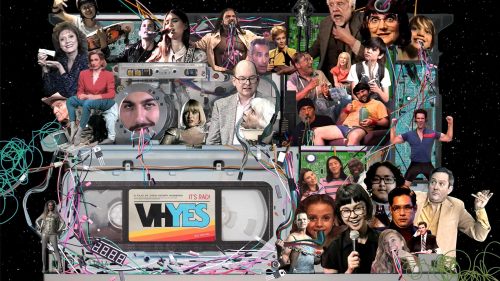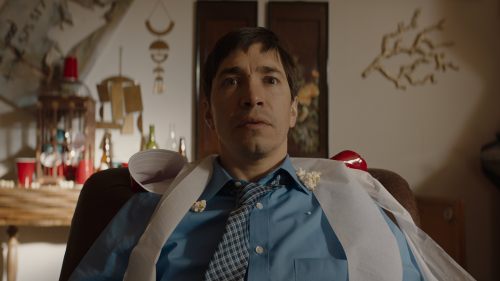Deathwave: This Ain’t An Arms Race, It’s A Scene
There's something very exciting happening in the low budget horror world. The last few years has seen an explosion of opportunities for low budget horror filmmakers; the rise of VOD and the need for content- I believe IFC Midnight released 10,000 movies last year - has led to a surge of buyers seeking dark genre material. That surge has happened at the same time that a festival circuit has popped up for these filmmakers; while genre movies always had their place at the film festival (kiddie) table, the last decade has seen the 'midnight' sections of fests like Sundance and The Toronto International Film Festival become as exciting as the main sections, and it's seen the rise of specialty genre fests like Fantastic Fest. More regional fests have been leaning on genre films to juice local audience excitement, and now indie horror filmmakers can find themselves working on a movie for seven months and then touring behind it on the festival circuit for four to six months, traveling the world.
These filmmakers travel the circuit with other filmmakers, seeing each other again and again in strange cities around the globe. They eventually become friends - after all, they're the only people each other knows at these fests - and they hang out. If they live in LA they hang out together there (if they live in the Valley around the nexus of Dark Delicacies and the Burbank scene, if they live in LA proper around the orbit of Cinefamily/New Beverly/karaoke), driven by shared interests and common experiences. They share things with each other - music they like, movies they love - and they cross-pollinate ideas. We recognize this in music as a scene, and there's really no functional difference in indie movies.
Today the Blumhouse blog ran the first piece in a multi-part examination of what they call a new movement in horror, Deathwave. The blog is almost right - there's a thing happening here, but it isn't a movement. It's a scene. And that doesn't reduce the importance of what it is.
There have been scenes in film forever. Likeminded filmmakers have always hung together (especially in their earliest days, when they're coming up). The French New Wave immediately comes to mind - and that's a film scene that can be seen very easily as a legitimate 'movement,' in that many of the films shared aesthetic values. My favorite film scene was the Movie Brats, a pack of USC students who would go on to completely change the world of cinema, but who are harder to claim as a singular movement. Imagine hanging out in the late 60s with John Milius and George Lucas and Steven Spielberg and Francis Ford Coppola in LA, or with Brian De Palma and Martin Scorsese in New York (De Palma introduced Scorsese to Robert De Niro). These guys hung out, they served as mentors to each other, they supported each other, and eventually they went on to do their own things in their own way. You have to bend over backwards to fit them into a specific aesthetic 'movement,' but they clearly influenced and inspired one another.
Scenes have been especially ubiquitous in horror. The world of horror filmmaking and financing is smaller, and it attracts especially likeminded people. Some filmmakers use horror as a stepping stone (see Coppola and Dementia 13) while others approach it more as a vocation. Those people tend to have commonalities that lend themselves to being in a scene, although until the birth of the festival circuit it has often been looser. The Movie Brats had a shadow scene, horror filmmakers whose main connection tended to be Dan O'Bannon. Many of the great horror filmmakers of the 70s and 80s were not centrally located, and there wasn't a convention or festival infrastructure to bring them together as readily. But scenes have always popped up, and in recent years they've even started getting appropriately ghoulish names - the Splat Pack and mumblegore come to mind.
Deathwave was coined by Adam Egypt Mortimer, director of Some Kind of Hate and a recent BMD subject in an article about Psychotronic Breakup Movies, another term he coined. Mortimer could work in advertising with that catch-phrase facility, and both of those terms are perfectly evocative. The Psychotronic Breakup Movie makes sense, although Deathwave doesn't exactly work for me beyond sounding cool. Mortimer first compiled his Deathwave tweets into a Storify and then explained it to Blumhouse:
There was this key moment, when [Some Kind of Hate editor] Josh invited me to this Fourth of July barbecue at Jen Yamato (Entertainment Reporter for The Daily Beast)’s house. I’d really like to call that moment the birth of Deathwave, the 4th of July, 2014. I went along, and Mickey (Keating) was there, Roxanne Benjamin, Joe Begos (ALMOST HUMAN), Dennis Widmeyer (STARRY EYES), all of these people I never would have known. I noticed all of these people having tattoos of things like DAWN OF THE DEAD, in the way that people used to have band tattoos. Travis Stevens was there too. I was there, standing around thirty-five people, all of which were making these emotionally relevant, personally driven, low budget horror films. They were all making their own films, but seemed to have a singular vision and were almost connected in a way. I mean, Josh Ethier edited so many of those movies.
In a small way, I (coined Deathwave) to be silly, but in another way, it’s pretty serious, and it’s like death, really dealing with death and grappling with the idea that death is 100% going to happen and it’s the worst thing that you can imagine. So in Deathwave, it can be silly and fun, but we can’t help but address the true reality that death is on its way.
That really sums up a lot of horror movies - confronting our mortality is one of the main functions of horror - but what Mortimer is actually talking about here isn't a movement. It's completely a scene. And it's an exciting scene (I'm not 'in' it but I hang out with a bunch of people in it) filled with interesting filmmakers, but they tend to be very different kinds of interesting filmmakers. Some of the filmmakers mentioned in the piece include Joe Begos, Mickey Keating and Larry Fessenden (a veteran of the 'mumblegore' wars), three guys whose films have little in common (beyond Keating and Begos both wearing their influences on their sleeves, although their influences - Keating's Darling is soaked in Polanski while Begos' The Mind's Eye is so Cronenberg it's almost Scanners: A New Generation (and I mean that lovingly) couldn't be more different). There's just not a strong enough aesthetic throughline between these films to find a movement within them.
But that doesn't make what's happening with these filmmakers any less interesting. Before this Deathwave piece hit (and was met with a massive backlash on Twitter, by the way, including from some of the people name dropped as being at that BBQ!), I had been pondering the cross-pollination that the genre fest scene had started. I was at The Telluride Horror Show with Begos and Keating, and they spent a lot of time bro'ing out and getting stoned (on the legal weed up there in the mountains) and riding the gondola and talking about movies. Looking at these two, whose boxing match at Fantastic Fest Phil Nobile Jr said looked like watching two heshers fight in the parking lot of 7/11, you see kindred spirits, but Keating and Begos come at their movie fandoms from different perspectives - Begos seems the kind of guy who drills down deep into the films that he loves while Keating is more of an omnivore, consuming a huge swath of film history. That's what makes their friendship interesting, and I'm curious to see how they impact each others' films. That's the joy of a scene, seeing how different creative minds that hang out bump up against each other and change the other person's trajectory.
Horror people love and hate labels. They love to give them - no genre has as many subgenres as horror does - but they hate having them applied. Just as the horror community cringed at the 'mumblegore' label they recoiled at Deathwave. There's going to have to be a label on this generation of indie horror filmmakers, though, because what they're doing is good and important enough to stand the test of time. While they don't have a cinematic aesthetic in common (besides any aesthetic that comes with low budget filmmaking) they have a larger approach in common - a fiercely do-it-yourself attitude that carries the flag of the punk movement. It's a desire to make the art you want to see in the world instead of complaining that nobody else is making it for you. Few of these filmmakers will agree on what that art is, but they will all agree that it must come from a personal place. There's going to be a book written about this period, about the post-VOD and Fantastic Fest explosion of indie horror, about the mutating mass of filmmakers swapping casts, crews and ideas, and maybe Deathwave is just as good a name as any. It beats mumblegore.



